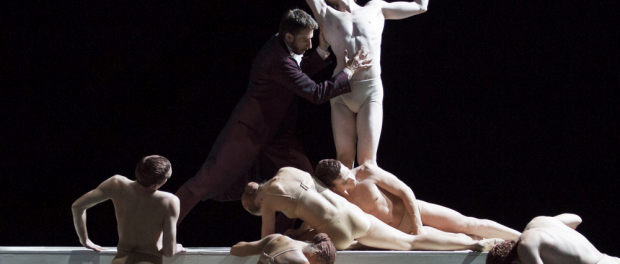Sculpting a Conceptual Ballet with Rodin / Claudel
Rodin/Claudel (choreographer Peter Quanz) is a contemporary ballet that narrates the inspiring yet turbulent relationship between French sculptors Auguste Rodin (12 November 1840 – 17 November 1917) and Camille Claudel (8 December 1864 – 19 October 1943).
https://www.youtube.com/watch?v=3zpt6O3eeG4
For those expecting a traditional ballet, keep in mind that this show is more of a conceptual piece, where the characters and sculptures interact with each other to display the emotional context of the scenes. In the first act, these interactions are sensual and erotic as Rodin and Claudel run their hands first over the bodies of the dancers who embody the raw materials, and then over each other. Their shared creative energy in sculpting transforms into an imaginative sex-scene where they come to resemble the clay that they previously molded, their bodies melding into each other and their gestures mirroring the process of sculpting.
From a conceptual point of view, embodying clay and sculpting through dance is a pretty ambitious feat. Yet, the choreography of the clay sculptures is executed magnificently, alternating between fluid and heavier movements. There is also a lot of floor-work, with dancers entangling and stacking their bodies on top of each other. The dancers transcend the boundaries of ballet and move into more contemporary dancing, and the choreography even borders on the spectrum of contortion and acrobatics at times. This is made more evident in the second act, where Claudel descends into a dark madness.
Claudel has an abortion (yes, that’s right, a ballet-style abortion) after being rejected by Rodin, who is apprehensive about leaving his long-time partner. Although Claudel and Rodin inspired each other’s work, Claudel’s sculptures are less popular. So, in a fit of rage, she destroys all of her sculptures one by one, but the fallen dancers rise up again like the undead, personifying the disturbing atmosphere, and the darkness that is to come. Claudel is ultimately committed to a mental health institution by her brother, where she remains for 30 years.
At the curtain call, the cast did not receive a very enthusiastic round of applause from the audience, which was unfortunate. This could be due to the dark ending, but it could be argued that the audience was unsure of what to make of this show. It was definitely unique, with it’s minimalist stage props, and unusual choreography. Even so, spectators should keep an open mind about this piece because it is not one to take lightly.
Rodin/Claudel runs at the Theatre Maisonneuve until March 22.








